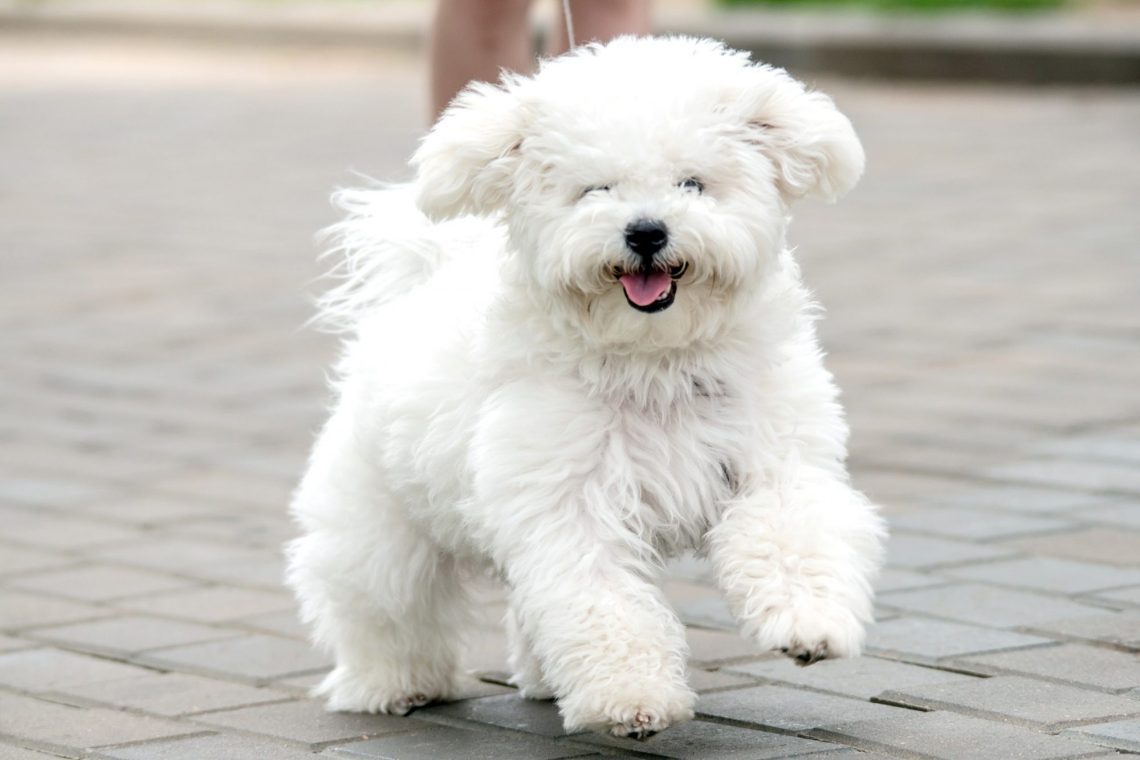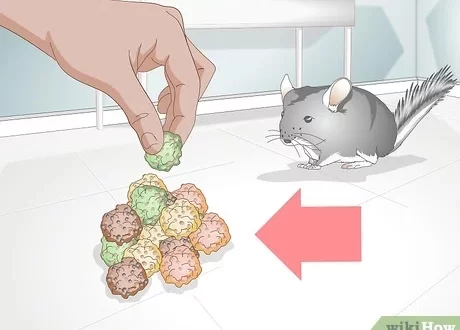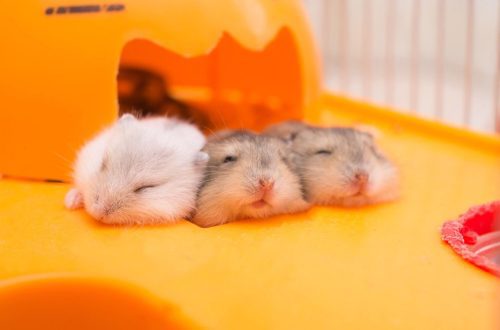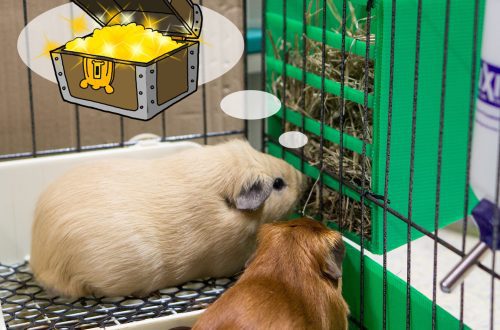
Breeding teddy, choice of animals
When choosing animals for further breeding, attention should be paid to the length, stiffness and elasticity of the coat. But almost all animals have a poorer coat structure on the sides, the coat may partially lie down. Very often there are animals that have a poor coat structure on the neck. There is no elasticity, openings appear. Leaving such animals in breeding is a big mistake. Since such an animal does not give offspring with good hair, and hence good results at exhibitions.
You also need to be critical of the ears and head. Ears should be beautiful, big. It is necessary to pay attention to the type and physique. But in the first place when choosing for breeding – the structure of the coat, after which – the color, and only then – the physique.
It is difficult enough to make predictions for babies.
But there are a few signs by which you can judge. For example, if the hair on the stomach is curly, and also the more it is, the better. With the growth of the baby, the coat changes, becomes more elastic and stiff.
Toddlers with hard hair can be left in breeding. On the stomach there should be no waves, rosettes, partings or other imperfections in the coat. Babies should be finally evaluated at the age of about 3 months (at this time the coat will change completely).
At the age of 4-5 weeks, the teddy has a transitional period (but not all). At this time, the coat becomes soft and thin, the animal sheds. In some animals, the muzzle is drawn out, the good Roman nose is lost, and before that hanging ears can rise. No need to be afraid. Ears will drop, wool will be restored. Unlike Rex, Teddies remain the same after this period and will not change.
When choosing animals for further breeding, attention should be paid to the length, stiffness and elasticity of the coat. But almost all animals have a poorer coat structure on the sides, the coat may partially lie down. Very often there are animals that have a poor coat structure on the neck. There is no elasticity, openings appear. Leaving such animals in breeding is a big mistake. Since such an animal does not give offspring with good hair, and hence good results at exhibitions.
You also need to be critical of the ears and head. Ears should be beautiful, big. It is necessary to pay attention to the type and physique. But in the first place when choosing for breeding – the structure of the coat, after which – the color, and only then – the physique.
It is difficult enough to make predictions for babies.
But there are a few signs by which you can judge. For example, if the hair on the stomach is curly, and also the more it is, the better. With the growth of the baby, the coat changes, becomes more elastic and stiff.
Toddlers with hard hair can be left in breeding. On the stomach there should be no waves, rosettes, partings or other imperfections in the coat. Babies should be finally evaluated at the age of about 3 months (at this time the coat will change completely).
At the age of 4-5 weeks, the teddy has a transitional period (but not all). At this time, the coat becomes soft and thin, the animal sheds. In some animals, the muzzle is drawn out, the good Roman nose is lost, and before that hanging ears can rise. No need to be afraid. Ears will drop, wool will be restored. Unlike Rex, Teddies remain the same after this period and will not change.
When choosing breeding animals, it is necessary to pay attention to the fact that the animals do not have ridges, rosettes, openings, but have a thick, elastic coat of the same length, standing (almost all animals have a poorer coat structure on the sides, but it should not be smoothed). It is undesirable to breed animals with a defect in the coat on the back of the head, which looks like a crown: this defect is inherited. As in all breeds, it is necessary to pay attention to the type and structure of the body, and it is also important to remember that in the Teddy breed, when choosing an animal for breeding, the structure of the coat comes first, and only then the color and pattern. True, they cannot be neglected, but an animal with a good coat structure and structure will always have an advantage. A Teddy even with good color distribution and pure color will not produce good offspring if he has a bad, flattened coat or coat errors. Critical in a teddy are the head and ears.
There is a tendency in Teddy that with the right choice of breeding animals, breeding will very quickly lead to a blunt head with small, short and always incorrectly lying ears. Therefore, it is important for Teddies to cross animals with blunt snouts with animals with more elongated snouts. When choosing a manufacturer, attention should be paid to the fact that he has a more oblong head shape (this does not mean a sharp muzzle, but simply not round like a ball, with a round nasal bone) with good, well-lying ears.
When choosing breeding animals, it is necessary to pay attention to the fact that the animals do not have ridges, rosettes, openings, but have a thick, elastic coat of the same length, standing (almost all animals have a poorer coat structure on the sides, but it should not be smoothed). It is undesirable to breed animals with a defect in the coat on the back of the head, which looks like a crown: this defect is inherited. As in all breeds, it is necessary to pay attention to the type and structure of the body, and it is also important to remember that in the Teddy breed, when choosing an animal for breeding, the structure of the coat comes first, and only then the color and pattern. True, they cannot be neglected, but an animal with a good coat structure and structure will always have an advantage. A Teddy even with good color distribution and pure color will not produce good offspring if he has a bad, flattened coat or coat errors. Critical in a teddy are the head and ears.
There is a tendency in Teddy that with the right choice of breeding animals, breeding will very quickly lead to a blunt head with small, short and always incorrectly lying ears. Therefore, it is important for Teddies to cross animals with blunt snouts with animals with more elongated snouts. When choosing a manufacturer, attention should be paid to the fact that he has a more oblong head shape (this does not mean a sharp muzzle, but simply not round like a ball, with a round nasal bone) with good, well-lying ears.
It is relatively difficult to predict later coat quality in babies. There are several principles to keep in mind. Babies get a good coat, in which, after birth, a firm, elastic coat structure and a dense coat are felt. And on the stomach they should have strong curls (like a good textile at birth). With age, the coat on the belly will become smoother, and in an adult Teddy it is only slightly corrugated in some places. There should be no ridges on the belly, no flaws in the coat. True, such animals can be taken for breeding, but very carefully, since these flaws are well inherited.
© Inese Schneider, based on materials from foreign sites
Nursery “Megrekss”, Latvia
It is relatively difficult to predict later coat quality in babies. There are several principles to keep in mind. Babies get a good coat, in which, after birth, a firm, elastic coat structure and a dense coat are felt. And on the stomach they should have strong curls (like a good textile at birth). With age, the coat on the belly will become smoother, and in an adult Teddy it is only slightly corrugated in some places. There should be no ridges on the belly, no flaws in the coat. True, such animals can be taken for breeding, but very carefully, since these flaws are well inherited.
© Inese Schneider, based on materials from foreign sites
Nursery “Megrekss”, Latvia





